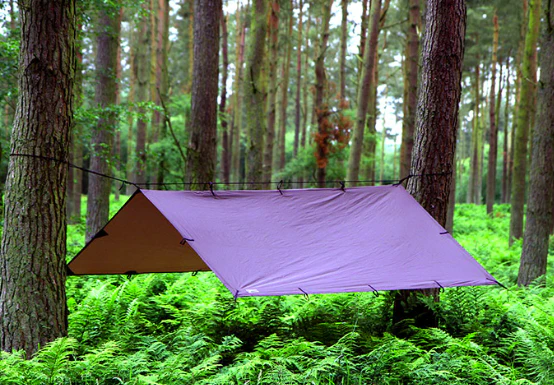Survival
Building an Effective Overnight Shelter in the Rainforest: A Guide for Military Personnel
When operating in the rainforest as a military member, adverse conditions and unforeseen circumstances can leave you stranded without access to conventional shelter. In such situations, knowing how to construct a suitable overnight shelter becomes crucial for survival. This blog article will guide you through the proper way to construct an effective overnight shelter in the rainforest, providing you with the knowledge and skills to protect yourself from the elements and ensure your safety.
- Assessing the Environment: Before constructing your shelter, it’s essential to assess the environment and choose an ideal location. Consider the following factors: a) Ground conditions: Look for dry, level ground to avoid water pooling and discomfort during your stay. b) Natural features: Take advantage of natural features like tree canopies or dense foliage that provide additional protection. c) Distance from potential hazards: Ensure your shelter is away from unstable terrain, insect nests, and other potential dangers.
- Shelter Design: To construct an effective overnight shelter, you have several design options to choose from, depending on available resources and the materials you can find in the rainforest. Here are two common shelter designs:
a) Lean-To Shelter: A lean-to shelter is a simple and reliable design that provides protection from rain and wind. To build a lean-to shelter:
- Find a sturdy tree or support structure as the main framework.
- Lean large branches or logs against the main structure at an angle, forming a sloping roof.
- Layer smaller branches, leaves, and vegetation over the framework to create a waterproof and insulating barrier.
b) A-Frame Shelter: An A-frame shelter offers more protection and stability but requires additional effort and resources. Here’s how to construct one:
- Locate two sturdy trees or support structures at an appropriate distance apart.
- Place a long, sturdy pole horizontally across the trees at chest height.
- Lean additional poles against the central pole, forming an “A” shape.
- Layer smaller branches, leaves, and foliage across the framework to create a waterproof roof and insulating walls.
- Shelter Construction Tips: When building your shelter, consider the following tips to enhance its effectiveness:
a) Ground preparation: Clear the ground of debris and sharp objects that may puncture your shelter or cause discomfort. b) Waterproofing: Layer your shelter with leaves, foliage, and other vegetation to create a waterproof barrier that sheds water away from the interior. c) Insulation: Increase warmth by adding insulating materials such as dry leaves or additional layers of foliage. d) Ventilation: Ensure proper airflow within your shelter to reduce condensation and prevent humidity buildup. e) Fire safety: Keep your shelter at a safe distance from your campfire to minimize the risk of accidental fires. f) Camouflage: Conceal your shelter using local vegetation to blend in with the surrounding environment and avoid detection.
- Essential Gear and Safety Measures: Along with your shelter construction, consider the following gear and safety measures to enhance your comfort and security in the rainforest: a) Mosquito netting or repellent to protect yourself from insects. b) A reliable knife or machete for cutting vegetation and materials. c) A waterproof groundsheet or poncho to create a dry sleeping area. d) Adequate hydration and a supply of potable water. e) Emergency signaling devices such as a whistle or signaling mirror. f) Knowledge of basic first aid techniques and a well-stocked first aid kit.
When stranded in the rainforest as a military member, constructing a proper overnight shelter becomes vital for your safety and well-being. By assessing the environment, choosing an appropriate design, and following the construction tips provided, you can create an effective shelter that protects you from the elements and increases your chances of survival. Remember to adapt your shelter construction techniques to the specific conditions and available resources in the rainforest, and always prioritize safety and preparedness in challenging situations.


